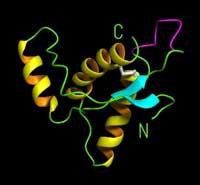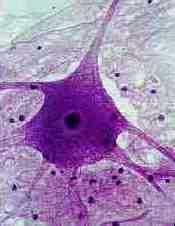Faulty cleaning system after Creutzfeldt- Jakob

From 1999 to the present, 786 people have died in Britain because of Creutzfeldt-Jakob disease. Of these, 669 have been hereditary and in 117 other cases have been spontaneous. According to experts, these last cases are directly related to mad cow disease.
In healthy cells the prions are produced constantly and there is a cleaning system to remove from the cell those that occur with errors. The defective ones are sent to the so called organelles proteosomes and are completely eliminated by the enzymes of the Pride.
According to a study at the Cambridge University of Massachusetts, the malfunction of the cleaning system can cause diseases caused by prions. Poorly folded proteins are produced abundantly and when the cleaning system works poorly, these proteins remain longer than necessary in the cell. If this occurs, scientists believe that the effects on healthy proteins begin to bend poorly.
To demonstrate belief, genetically modified rats were tested. Some were inactivated by genes that encode proteosoma and saw that many proteins from neurons took very toxic forms. Other rats were adapted to produce prion proteins in cells outside of the reticulum, and also in them, due to the accumulation of defective proteins, neurons were degenerated.

Therefore, with the discovery, scientists believe that the responsible for the death of the neuron is a defective cleaning system without prions. They believe that the defective cleaning system is due to a mutation in the genes that would explain the mechanism of hereditary Creutzfeldt-Jakob.
However, it remains to be clarified how diseases caused by prions move from animals to humans, and how prions that cause the disease affect healthy proteins.
Buletina
Bidali zure helbide elektronikoa eta jaso asteroko buletina zure sarrera-ontzian










